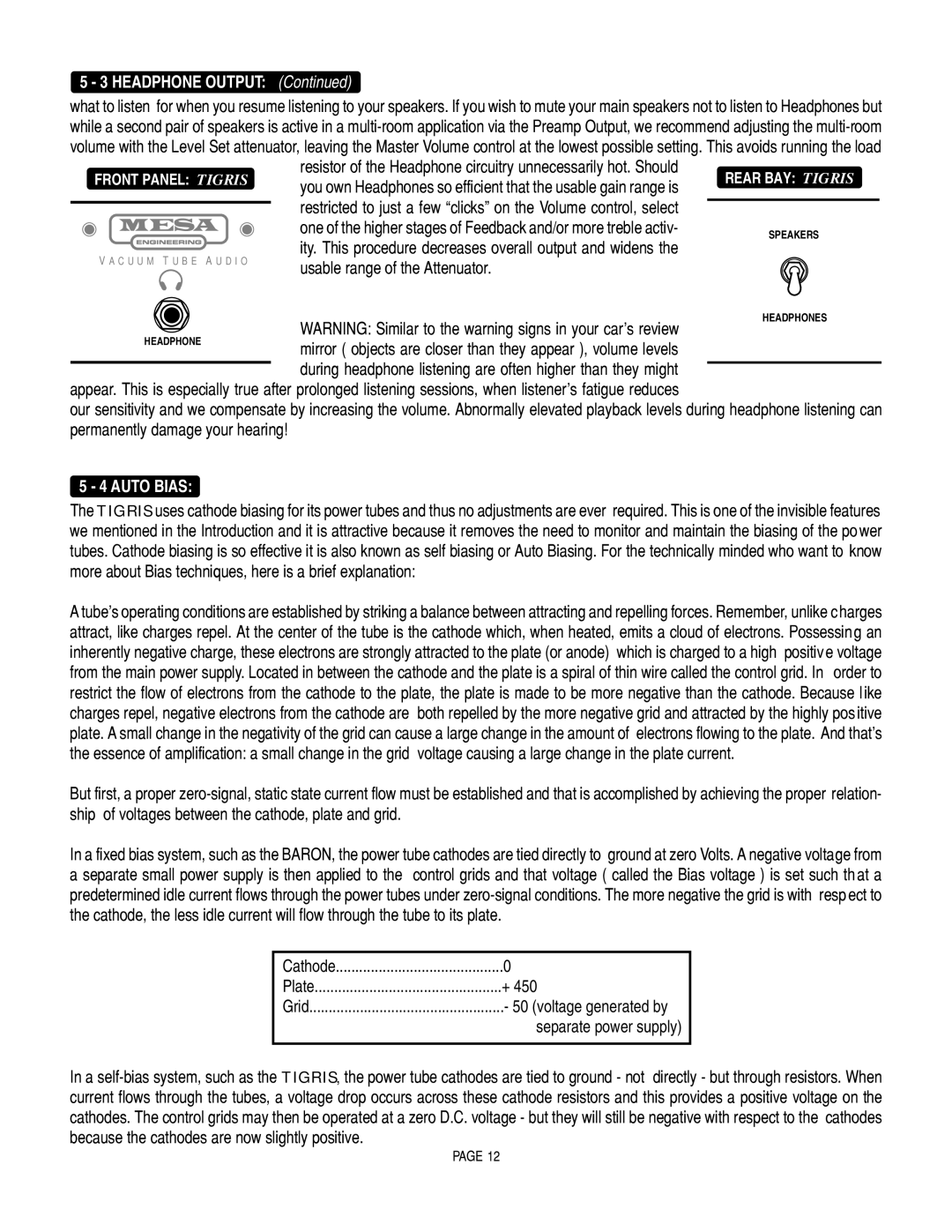Vacuum Tube Audio specifications
Mesa/Boogie is a revered name in the world of vacuum tube audio, renowned for its high-quality amplifiers that have shaped the sound of modern music. Founded in 1969 by Randy Smith in California, Mesa/Boogie began by transforming Fender amplifiers into customized, high-gain models, ultimately gaining a reputation for producing powerful, versatile, and low-noise amplifiers. The signature sound of Mesa/Boogie is characterized by a complex harmonic richness, warmth, and clarity that resonates with guitarists and audiophiles alike.One of the standout features of Mesa/Boogie amplifiers is their all-tube design. Utilizing vacuum tubes as the primary amplification source, these amps deliver a dynamic range and tonal complexity that solid-state amplifiers struggle to match. The quality of the tubes used, often hand-picked or specifically designed by Mesa, contributes to the unique audio characteristics of each model. The use of EL34, 6L6, and 12AX7 tubes in various configurations allows for a range of tonal options, from lush cleans to searing leads.
Mesa/Boogie amplifiers are also distinguished by their innovative technologies. The brand pioneered the dual rectifier system, which allows players to switch between tube and solid-state rectification. This feature gives musicians the ability to tailor their sound to preference, enhancing the responsiveness and feel of the amplifier. The Contour controls found on many models further exemplify Mesa’s commitment to versatility, allowing for fine-tuning of EQ settings that adapt to different musical styles.
Another hallmark of Mesa/Boogie designs is their attention to build quality. Each amplifier is crafted with robust materials, ensuring durability and reliability even in demanding performance environments. The custom cabinets and speaker selections are optimized to complement the amplified tone, providing a cohesive sound that resonates in live settings.
Mesa/Boogie’s reputation is enhanced by their extensive lineup, including the Mark series, the Rectifier series, and the Lone Star series. Each line caters to different playing preferences and styles, from jazz to metal. The versatility of these amplifiers makes them suitable for diverse genres, allowing musicians to explore their sonic identities.
In conclusion, Mesa/Boogie remains a leading force in vacuum tube audio, combining traditional craftsmanship with cutting-edge technology. Their dedication to quality, innovation, and tonal versatility ensures that they remain a favorite among guitarists seeking the ultimate sound experience. Whether in the studio or on stage, Mesa/Boogie amplifiers continue to inspire musicians to push the boundaries of creativity.

